Isometric exercises, often overlooked in fitness discussions, hold immense potential for older adults seeking to enhance their strength and overall well-being. The benefits of isometric exercises for older adults are significant, particularly as individuals age, and maintaining muscle mass and strength becomes crucial for preserving mobility, balance, and independence. These exercises involve muscle contractions without movement, allowing older adults to build strength safely and effectively, minimizing the risk of injury associated with dynamic workouts.
This article will delve into the numerous benefits of isometric exercises tailored for older adults, showcasing how they can significantly improve physical health and quality of life. By integrating these exercises into a daily routine, older adults can experience remarkable changes, empowering them to remain strong and active as they age. Discover the power of isometric exercises and how they can be vital in the journey toward better health and enhanced strength.
Benefits of Isometric Exercises for Older Adults: Boosting Strength Without Movement
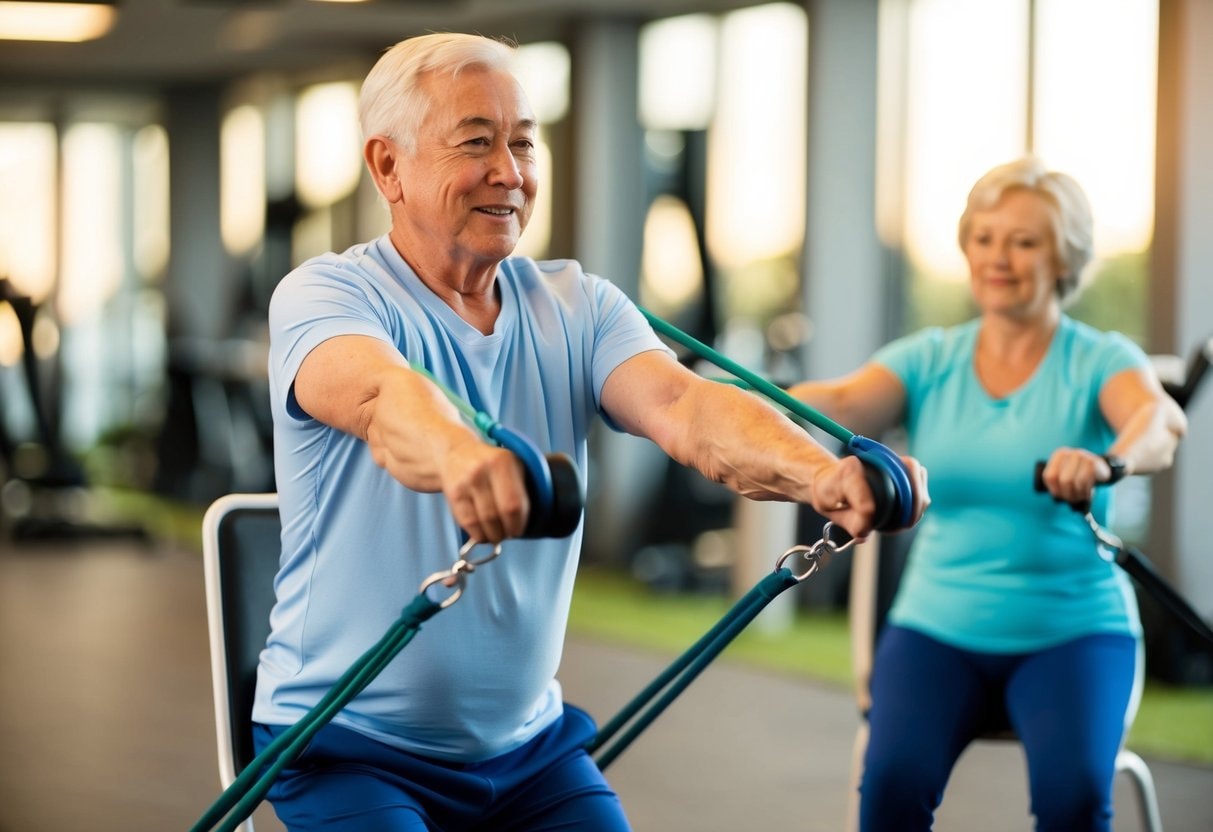
Staying fit as you age is key to a happy, healthy life. Isometric exercises offer a great way to keep your body strong without putting too much stress on your joints. These exercises involve holding a position or pushing against a fixed object. They can help you build strength, balance, and health. Isometric exercises can help older adults build muscle and improve balance with less risk of injury. You don’t need fancy equipment or a gym membership to do them.
Simple moves like wall sits, planks, or holding a dumbbell in place can give you a good workout. These exercises are easy to fit into your daily routine and can be done almost anywhere. As you get older, keeping your muscles strong becomes even more important. Isometric exercises can help you maintain your strength and stay steady on your feet. They’re also great for improving your core muscles, which play a big role in your balance. Plus, these exercises may even help lower your blood pressure.
Key Highlights
- Isometric exercises help build and maintain muscle strength as individuals age. These static contractions strengthen muscles without movement, making them ideal for improving daily function and independence.
- Engaging in isometric exercises enhances balance and stability, reducing the risk of falls. Stronger core muscles from exercises like planks contribute to better overall coordination and confidence in daily activities.
- Isometric exercises are gentle on the joints, making them suitable for older adults, especially those with joint pain or arthritis. By strengthening muscles and promoting joint flexibility, these exercises lower the likelihood of injuries.
- Regular practice of isometric exercises can improve cardiovascular health by raising the heart rate and potentially lowering blood pressure. Simple moves like a wall sit, and handgrip squeezes can enhance heart function safely.
- Beyond physical benefits, isometric exercises promote mental well-being by reducing stress and improving focus. The mindfulness aspect of these exercises can lead to a calmer mindset and improved cognitive function, making them a valuable addition to older adults’ fitness routines.
What Are Isometric Exercises?
Isometric exercises, known for their benefits for older adults, involve holding a static position without moving your joints or muscles. These exercises can help build strength and stability while providing numerous benefits of isometric exercises for older adults, requiring minimal equipment and space.
Defining Isometric Exercises
Isometric exercises are strength training where you contract your muscles without changing their length. You push or pull against a fixed object or use your body weight as resistance. During these exercises, your muscles tense up but don’t visibly move. Examples include wall sits, planks, and dead hangs. Isometric exercises are great for building strength in specific positions. They can help improve your posture and balance, too.
Comparison to Dynamic Exercises
Dynamic exercises involve movement, unlike isometric exercises. When you do bicep curls or squats, your muscles lengthen and shorten as you move. Dynamic exercises often use a wider range of motion. They can help improve flexibility and coordination more than isometric exercises.
Isometric exercises are gentler on your joints. This makes them a good choice if you have joint pain or arthritis. Both types of exercise have their place in a fitness routine. Isometric exercises are especially useful for maintaining strength as you age.
Health Benefits for Older Adults
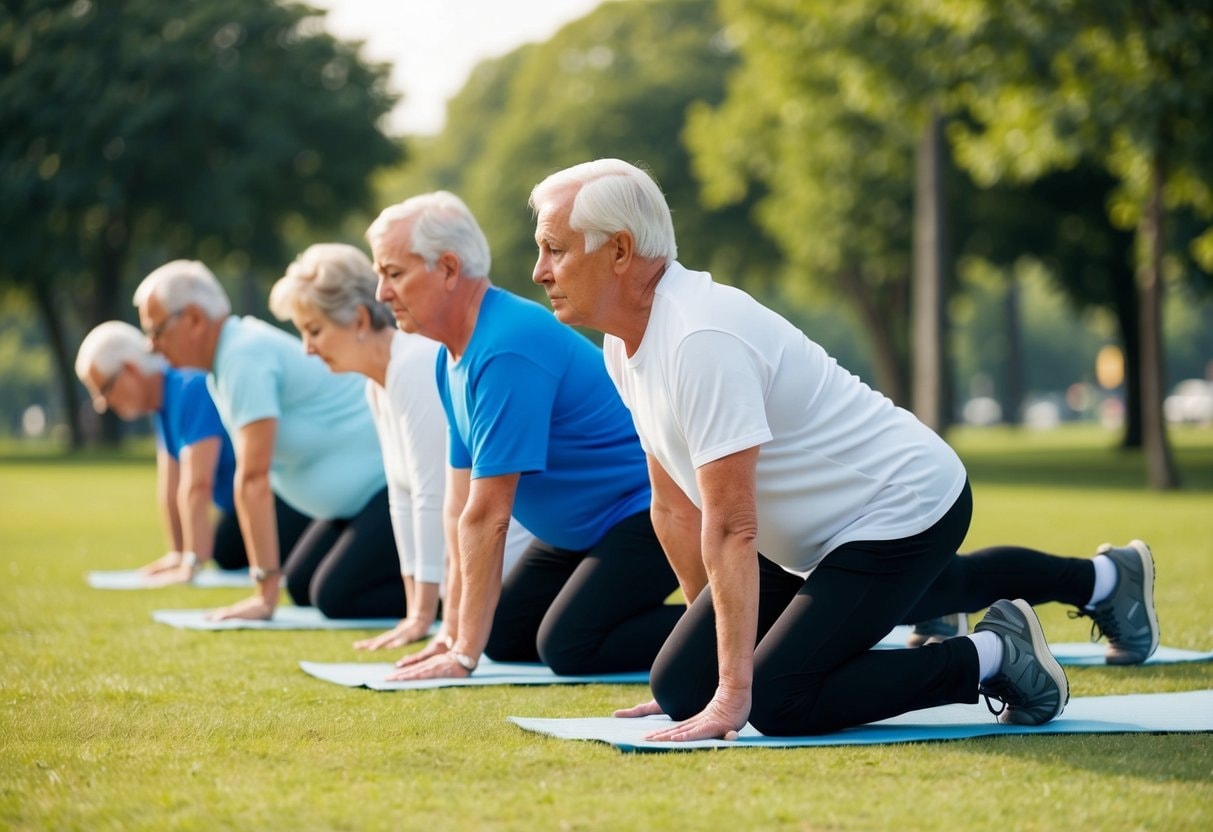
Isometric exercises offer many health perks for older adults, showcasing the benefits of isometric exercises for older adults. These exercises can make you stronger, steadier, and more flexible without putting too much stress on your body.
Enhanced Muscle Strength
Isometric exercises can help you build strength as you age. When you do these exercises, you tense your muscles without moving. This can make your muscles stronger over time. You can do isometric exercises anywhere, even while sitting. Try squeezing a ball between your hands or pushing against a wall.
These simple moves can help keep your muscles strong. Strong muscles are key for daily tasks. They help you carry groceries, climb stairs, and get up from chairs more easily. This strength can help you stay independent as you get older.
Improved Stability and Balance
Better balance means fewer falls. Isometric exercises can help you improve your balance and feel more stable. Try standing on one foot while holding onto a chair. This simple exercise can boost your balance. You can also do wall sits or planks to strengthen your core. A strong core helps you stay steady. It can make walking and moving around easier and safer. This can give you more confidence in your daily activities.
Joint Health and Flexibility
Isometric exercises are gentle on your joints. They can help keep your joints healthy without too much stress. Try holding your arms out to the sides for 30 seconds. This can help your shoulder joints stay flexible. You can also do gentle leg presses against a wall to work your knees. These exercises can help keep your joints moving well. This can make everyday tasks easier and less painful. It can also help you stay active and enjoy your favorite hobbies.
Isometrics and Bone Density
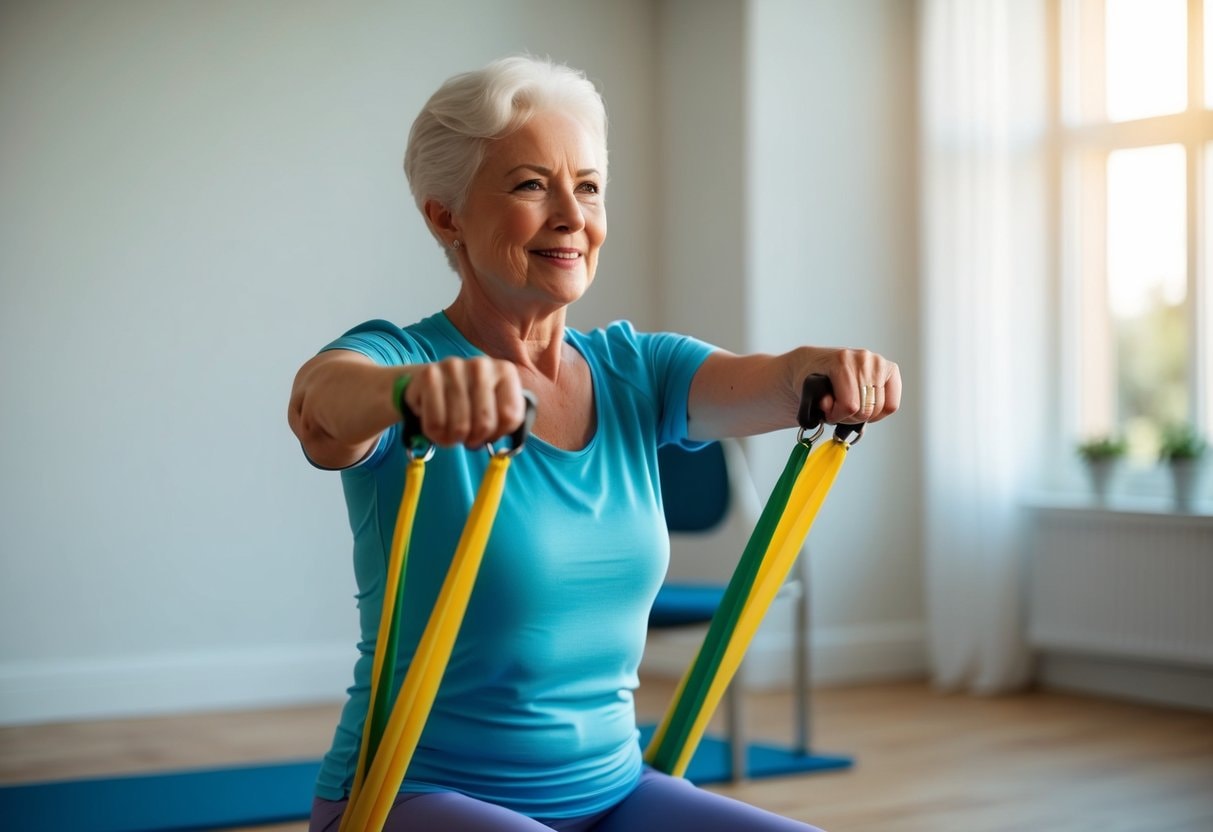
Isometric exercises can play a key role in maintaining bone density as you age, highlighting the benefits of isometric exercises for older adults. These exercises put stress on your bones, which helps stimulate bone growth and strength.
Prevention of Osteoporosis
Isometric exercises are great for strengthening bones and can help prevent osteoporosis. When you perform these exercises, you create muscle tension without moving your joints. This tension sends signals to your bones to become stronger. Try wall sits to boost bone density in your legs and hips. Stand against a wall, then slide down until your thighs parallel the ground. Hold this position for 30 seconds.
Planks are another effective isometric exercise for bone health. They target your core, arms, and legs. Start in a push-up position, lower onto your forearms, and hold for 20-30 seconds. Remember to consult your doctor before starting any new exercise routine, especially if you have bone health concerns.
Promotion of Cardiovascular Health
Isometric exercises can help boost your heart health as you age, showcasing the benefits of isometric exercises for older adults. These simple, stationary movements can improve your cardiovascular function without putting too much strain on your body. When you do isometric exercises, your heart rate increases, strengthening your heart over time. It’s like giving your heart a gentle workout, making it an ideal choice for those looking to enhance their fitness safely.
You might notice your blood pressure gets better, too. Isometric exercises can help lower the top and bottom numbers of your blood pressure reading. These exercises also help your blood vessels stay flexible. This is good for your whole circulatory system. Here are some easy isometric exercises for heart health:
- Wall sits.
- Plank holds.
- Handgrip squeezes.
Try to do these exercises for 30 seconds at a time. Rest for a minute, then repeat. Aim for three sets of each exercise. Remember to breathe normally while you hold each position. Holding your breath can spike your blood pressure, which isn’t good for your heart. Always check with your doctor before starting a new exercise routine. They can help you find the right isometric exercises for your fitness and health needs.
Benefits Of Isometric Exercises For Older Adults: Reduction of Injury Risk
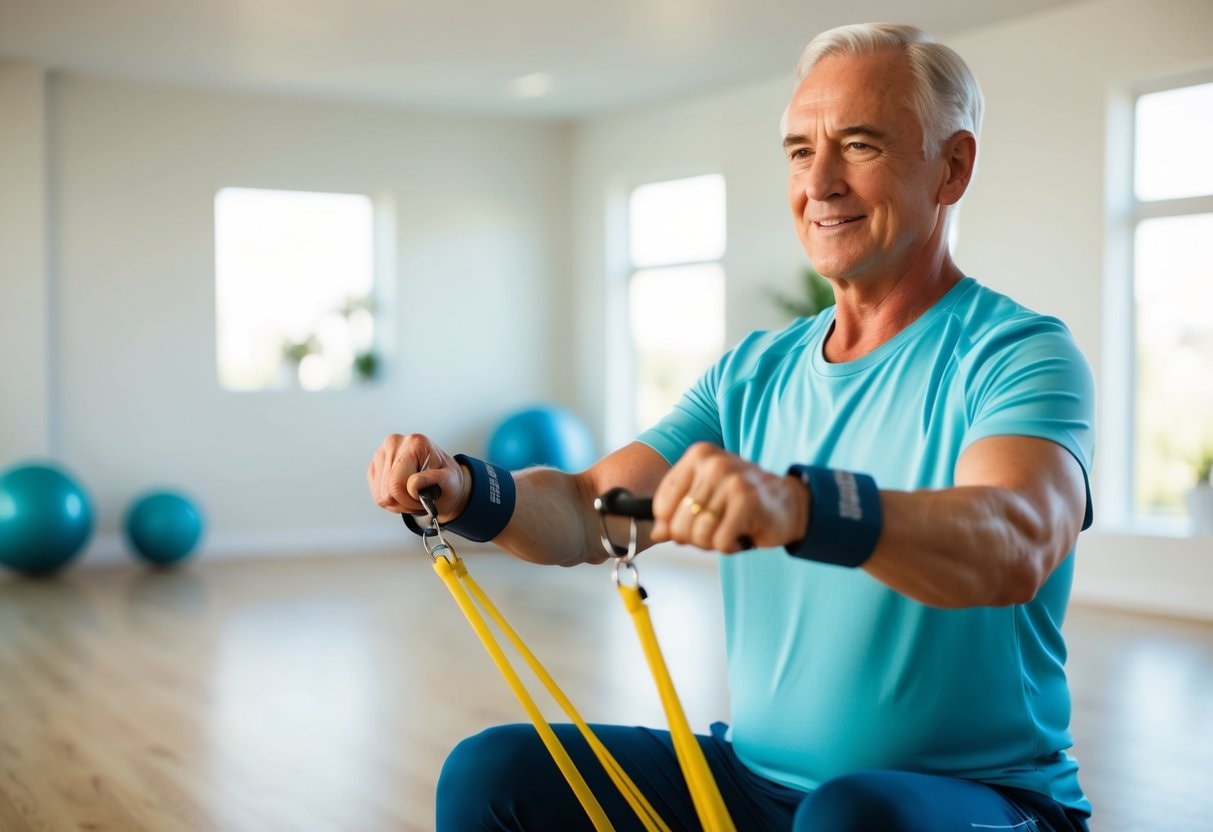
Isometric exercises can help you lower your chances of getting hurt. These exercises are great for older adults because they don’t put too much stress on your joints. When you do isometric exercises, you hold still in one position. This makes your muscles stronger without moving around a lot. Stronger muscles help protect your joints and bones.
Isometric resistance training is a safe way to build strength. You don’t need to lift heavy weights or do fast movements. This means you’re less likely to pull a muscle or strain yourself. These exercises can also improve your balance. Better balance means you’re less likely to fall. Falls are a big worry for older adults, which is really important.
Here Are Some Ways Isometric Exercises Can Help Reduce Injury Risk:
- Increase body awareness.
- Improve balance.
- Build muscle strength.
- Lower fall risk.
- Protect joints.
You can do many isometric exercises at home without any special equipment. This makes it easy to fit into your daily routine. Remember to start slow and listen to your body. Always talk to your doctor before starting a new exercise program. They can help you figure out what’s safe for you to do.
Did you Know?
You can easily add isometric exercises to your daily routine. These simple moves can be done almost anywhere and don’t need special equipment. You can start with wall sits. Stand with your back against a wall and slide down until your thighs are parallel to the floor. Hold this position for 30 seconds.
Take a look at this video on a new study highlighting the significance of strength training for older adults.
By: MU Health
Accessibility of Isometric Exercises
Isometric exercises are easy to do and fit into your daily life, making the Benefits of Isometric Exercises for Older Adults accessible to everyone. You can perform them almost anywhere, anytime, with little to no equipment, allowing flexibility in incorporating them into a routine.
Low Impact Nature
Isometric exercises are gentle on your body. You don’t need to move around or jump, which makes them safe for your joints. This is great if you have sore knees or hips. These exercises put less stress on your body than other types of workouts.
You can do them even if you have osteoarthritis or neck pain. Isometric moves are perfect if you’re new to exercise or getting back into it after a break. They help you build strength without risking injury.
No Equipment Requirement
You don’t need fancy gym gear to do isometric exercises. Your body weight is often enough. Here are some simple exercises you can try at home:
- Wall sits.
- Planks.
- Isometric bicep curls with household items.
These moves use things you already have at home. A chair, wall, or doorway is all you need for many isometric exercises.
Adaptable for Varying Fitness Levels
Isometric exercises work for people of all fitness levels. You can make them easier or harder to match your needs. If you’re just starting, try holding positions for shorter times. As you get stronger, you can hold them longer.
You can also change how hard you push or pull to suit your strength. This makes isometric exercises good for older adults with different fitness levels. You can still do many isometric exercises even if you have trouble moving around. They’re great for building core strength and improving your balance.
Psychological Advantages

Isometric exercises offer significant mental health benefits for older adults. As part of the benefits of isometric exercises for older adults, they can help individuals feel calmer and sharpen their focus.
Stress Reduction
Isometric exercises can help you relax and lower stress levels. When you engage in these exercises, you focus on contracting specific muscles. This concentration can take your mind off worries and promote a sense of calm. The controlled breathing that often accompanies isometric exercises also helps reduce stress.
As you hold a position, your breathing may become slower and more regular. This can trigger your body’s relaxation response. Some isometric exercises, like wall sits or planks, can be moving meditation. As you hold the position, you might find your mind becoming clearer and more peaceful.
Improved Mental Focus
Isometric exercises can sharpen your mental focus and concentration. When you perform these exercises, you need to pay close attention to your body and muscle tension. This practice can improve your overall ability to concentrate. Squeezing your hands in an isometric exercise might even boost your memory. Research suggests this simple action can speed up your working memory responses.
Regular isometric exercise may help keep your mind sharp as you age. The increased blood flow to your brain during exercise can support cognitive function. This may help you stay mentally alert and focused in your daily activities. Isometric exercises can also boost your confidence by improving your balance and strength. This can lead to a more positive outlook and better mental well-being overall.
Safety Considerations and Best Practices
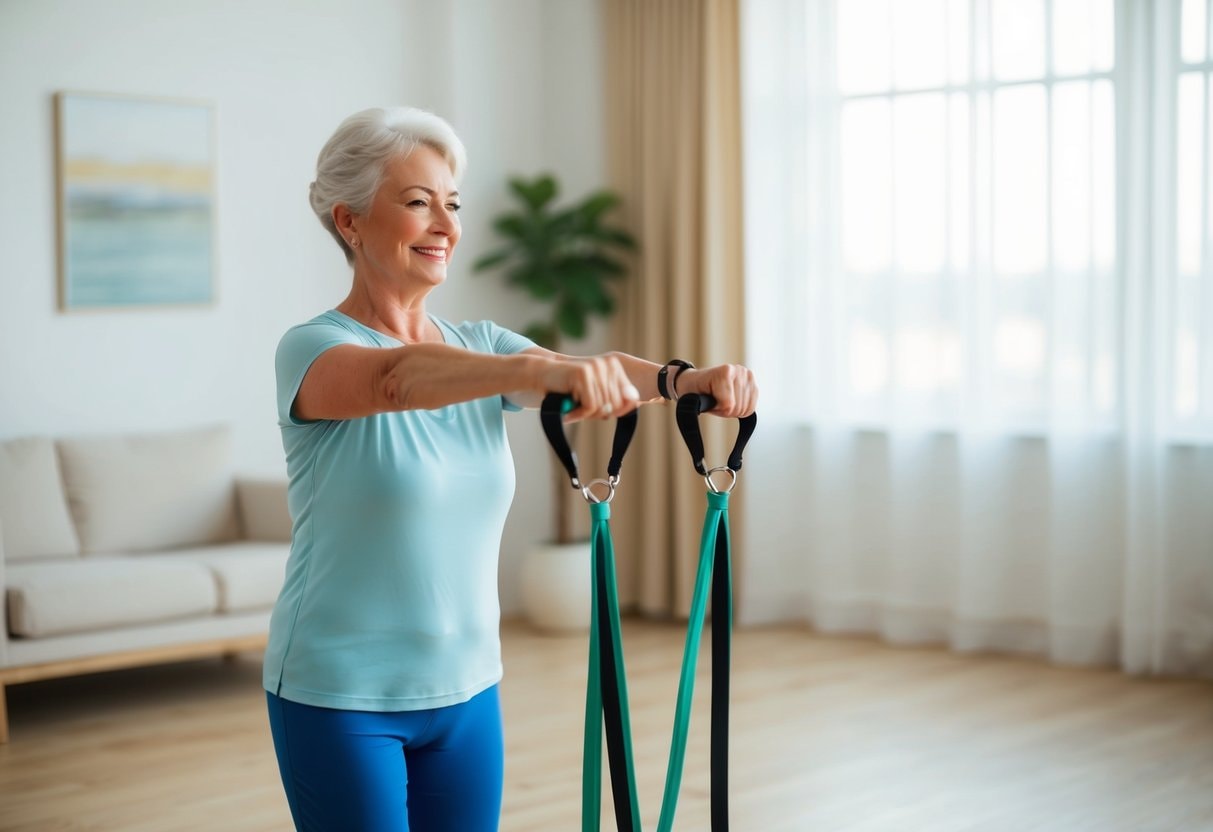
Isometric exercises can be great for older adults, offering numerous benefits of isometric exercises for older adults, but safety comes first. Always check with your doctor before starting any new exercise routine. Start slow and listen to your body. If you feel pain, stop the exercise right away. Isometric exercises for seniors are low-impact and can be done almost anywhere, making them a safe choice for many older adults looking to reap the benefits of isometric exercises for older adults.
Remember to breathe normally during exercises. Don’t hold your breath, as this can raise your blood pressure. Choose a stable position when doing these exercises. Use a chair or wall for support if needed. Here are some key safety tips:
- Warm up before exercising.
- Stay hydrated.
- Wear comfortable clothes and shoes.
- Exercise in a cool, well-ventilated area.
If you have high blood pressure, be extra careful. Some isometric exercises may affect your blood pressure. Start with short holds of 5-10 seconds. As you get stronger, you can slowly increase the hold time. Try to do isometric exercises 2-3 times a week. This gives your muscles time to rest and recover between sessions. The goal is to improve your health, not push yourself too hard. Take it easy and enjoy the process!
Check out this video on Simple Isometric Exercises for a 10-Minute Fitness routine.
By: 10-Minute Fitness
Embracing Isometric Exercises for Enhanced Strength and Well-Being in Older Adults
Incorporating isometric exercises into the fitness routines of older adults can yield numerous benefits that enhance overall strength, stability, and health. These exercises support muscle growth and joint health and contribute to better balance and coordination, ultimately reducing the risk of falls. The low-impact nature of isometric exercises makes them ideal for older adults, as they can be performed safely and conveniently, often without specialized equipment.
Moreover, the psychological advantages of these exercises, such as stress reduction and improved mental focus, further emphasize their value in promoting a holistic approach to health and wellness for older adults. By embracing isometric exercises, older adults can cultivate strength and resilience, empowering them to lead active, fulfilling lives. Prioritizing safety and gradual progression, these exercises can seamlessly integrate into daily routines, fostering a commitment to long-term health and vitality.
Frequently Asked Questions
What Are Some Accessible Isometric Exercises for Older Adults?
Wall sits are great for leg strength. Stand with your back against a wall and slowly slide down until your thighs are parallel to the floor. Hold this position. Planks are excellent for core strength. Start on your forearms and toes, keeping your body straight. Hold this position for as long as you can. Isometric bicep curls help build arm strength. Hold a lightweight at a 90-degree angle and maintain that position.
How Can Isometric Exercise Benefit Seniors Specifically?
Isometric exercises can improve strength without putting stress on joints. This is great if you have arthritis or joint pain. These exercises can help maintain muscle mass, which often decreases with age. Strong muscles support better posture and reduce fall risk. Isometric exercises can also improve balance and stability. This is crucial for preventing falls and maintaining independence.
What Are the Pros and Cons of Incorporating Isometric Exercises Into an Elderly Fitness Routine?
Pros include low impact on joints, improved strength, and better balance. You can do many isometric exercises anywhere without special equipment. Cons may include a limited range of motion work. Some people might find holding static positions boring compared to other exercises.
Energize Your Fitness Path After 55!
Greetings, fitness enthusiasts! Explore the essentials of vitality and wellness with Fit After 55! Whether you’re an experienced fitness buff or just getting started, our platform is your go-to source for comprehensive health. From creating attainable goals to celebrating your progress, we’re here to support you in redefining what it means to flourish after 55. Join us on our website and Facebook page today to unlock your true potential with Fit After 55!
Explore Additional Information on Exercises for Seniors
Strength Training Improves Immune System in Seniors: The Benefits of Exercise
